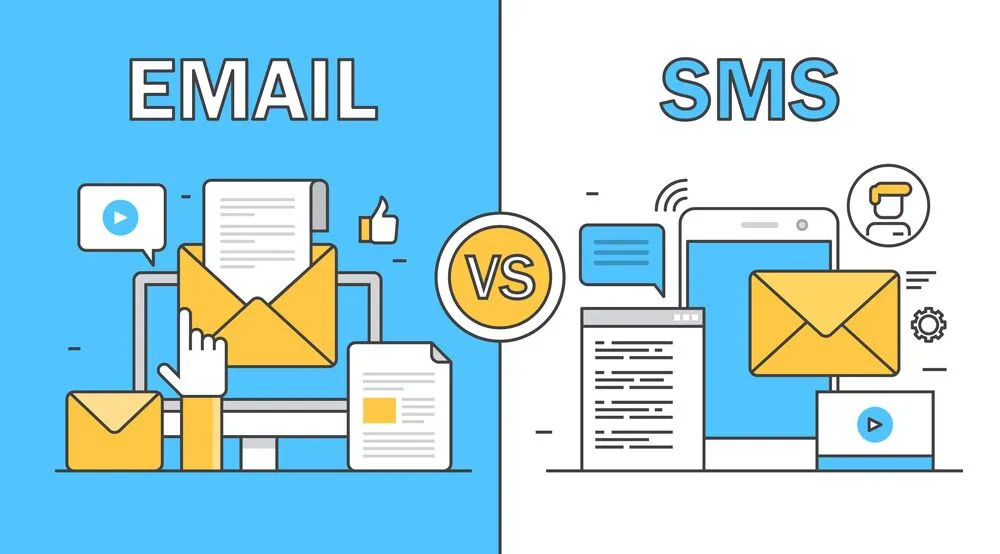Email & SMS Marketing

Introduction
In the digital age, where consumers are constantly bombarded with advertisements and messages, email and SMS marketing remain powerful tools for businesses to directly engage with their audience. These channels offer a personalized and targeted approach that can drive customer engagement, increase sales, and build brand loyalty. This paper delves into the intricacies of email and SMS marketing, exploring their benefits, best practices, and strategies for success.
Understanding Email Marketing
Email marketing involves sending commercial messages to a group of people via email. It is one of the oldest and most effective forms of digital marketing, with a high return on investment (ROI) when executed correctly. Email marketing allows businesses to reach their audience directly in their inbox, delivering personalized and relevant content.
Key Elements of Email Marketing
Building an Email List: The foundation of email marketing is building a quality email list of subscribers who have opted in to receive communications from your business. This can be done through website sign-up forms, lead magnets, and other incentives.
Personalization: Personalization is crucial in email marketing, as it helps increase engagement and conversion rates. This can include using the subscriber’s name in the email, segmenting your list based on demographics or behavior, and sending targeted content.
Compelling Content: The content of your emails should be informative, engaging, and relevant to your audience. This can include promotional offers, product updates, blog posts, and curated content.
Call-to-Action (CTA): Every email should have a clear and compelling call-to-action that prompts the recipient to take the desired action, whether it’s making a purchase, signing up for an event, or downloading a resource.
Mobile Optimization: With the majority of emails being opened on mobile devices, it’s essential to ensure that your emails are mobile-friendly and optimized for various screen sizes.
Understanding SMS Marketing
SMS (Short Message Service) marketing involves sending promotional messages to customers via text message. It is a highly effective form of marketing, with high open and response rates. SMS marketing allows businesses to reach customers instantly and deliver time-sensitive messages.
Key Elements of SMS Marketing
Permission-Based: Like email marketing, SMS marketing should be permission-based, with customers opting in to receive messages from your business. This can be done through keyword opt-ins, online sign-up forms, or in-store promotions.
Concise Messaging: SMS messages have a character limit, so it’s essential to keep your messages concise and to the point. Focus on delivering the most important information and include a clear call-to-action.
Timing: Timing is crucial in SMS marketing, as you want to send messages when your audience is most likely to be receptive. Avoid sending messages late at night or early in the morning, and consider the time zone of your recipients.
Personalization: Personalization can also be effective in SMS marketing, such as addressing recipients by name or sending targeted offers based on their past purchases or preferences.
Compliance: It’s essential to ensure that your SMS marketing campaigns comply with relevant regulations, such as the Telephone Consumer Protection Act (TCPA) in the United States. Obtain explicit consent from customers before sending them promotional messages, and provide an opt-out option.
Benefits of Email & SMS Marketing
Direct Communication: Email and SMS marketing allow businesses to communicate directly with their audience, bypassing intermediaries like social media algorithms.
High Engagement: Both email and SMS marketing have high open and response rates compared to other forms of digital marketing, making them highly effective for reaching and engaging customers.
Cost-Effective: Email and SMS marketing are cost-effective compared to traditional forms of advertising like print or TV ads. They require minimal investment in terms of resources and can deliver a high ROI.
Targeted Messaging: Email and SMS marketing allow businesses to send targeted messages to specific segments of their audience, based on demographics, behavior, or past interactions.
Trackable Results: Both email and SMS marketing platforms offer robust analytics and reporting tools that allow businesses to track the performance of their campaigns in real-time. This enables them to make data-driven decisions and optimize their strategies for better results.
Best Practices for Email & SMS Marketing
Segmentation: Segment your email and SMS lists based on demographics, behavior, or purchase history to send more targeted and relevant messages.
Automation: Use automation tools to set up triggered email and SMS campaigns based on specific actions or events, such as abandoned cart emails or birthday greetings.
Testing: A/B test different elements of your emails and SMS messages, such as subject lines, content, and CTAs, to optimize for better results.
Compliance: Ensure that your email and SMS marketing campaigns comply with relevant regulations, such as GDPR in Europe or CAN-SPAM in the United States.
Optimization: Continuously monitor and optimize your email and SMS marketing campaigns for better performance. This includes analyzing open and click-through rates, conversion rates, and other key metrics.
Conclusion
Email and SMS marketing remain powerful tools for businesses to directly engage with their audience and drive results. By understanding the key elements, best practices, and benefits of email and SMS marketing, businesses can leverage these channels to increase sales, build brand loyalty, and achieve their marketing goals. With the right strategies in place, email and SMS marketing can be valuable additions to any digital marketing strategy, helping businesses reach their target audience effectively and efficiently.
Get proposal for your Company
sent mail on:- Info@amazingAI.in